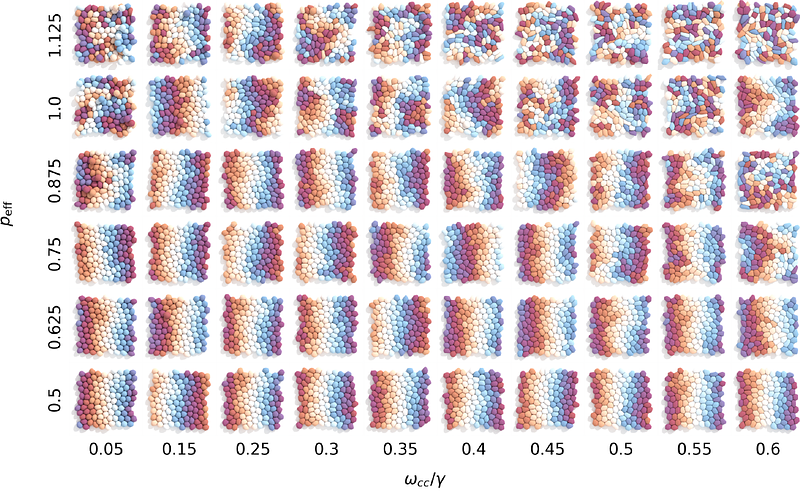Rigidity transitions in a 3D active foam model of cell monolayers with frictional contact interactions

Rigidity transitions in a 3D active foam model of cell monolayers with frictional contact interactions
Vangheel, J.; Ramon, H.; Smeets, B.
AbstractIn morphogenesis and disease, biological tissues may exhibit diverse mechanical properties due to their capacity to switch between fluid-like to solid-like states through the (un)jamming transition. Here, we introduce a novel foam model to investigate how active mechanical properties and cellular interactions govern this transition in active cell monolayers. This model explicitly represents 3D cell shapes and describes cell-cell interactions via discrete interacting surfaces. Simulations reveal that cell-cell adhesive tension promotes tissue fluidization in high adhesive tissues, where it mainly promotes cell deformability, while it induces solidification in the low adhesive regime, where it prevents cell-cell debonding. Moreover, we study the dynamic role of adhesive ligand turnover through an effective intercellular friction. Through simulated shear experiments, we find that intercellular friction strongly suppresses neighbor exchanges, but does not lead to solid-like tissue properties. We discuss the implications of our results for understanding the relationship between unjamming and partial epithelial-mesenchymal transition, highlighting how differences in adhesion dynamics and intercellular friction may reconcile conflicting observations in tissue mechanics and cancer metastasis.